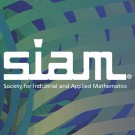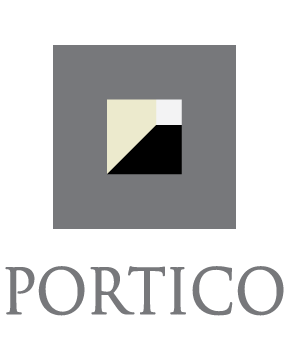How is the CROSSREF OPEN FUNDER REGISTRY taxonomy maintained and updated?
The Crossref Open Funder Registry is maintained and made freely available by Crossref in collaboration with Elsevier, which gave an initial boost by donating its taxonomy of international funder names and IDs.
The Registry is expanding to encompass the worldwide range of funders referenced in the publications of Crossref-participating publishers. Changes and additions submitted to Crossref are incorporated on an ongoing basis. When an article is published that references a funder not currently in the Registry, the publisher can submit that name, without a funder ID, in its CrossRef metadata deposit and the request will be reviewed by Crossref for incorporation into Registry.
How are the crossref open funder Registry agency hierarchies maintained?
Crossref consults with individual agencies and organizations to review and verify their names and hierarchy. Any corrections or changes should be submitted to Crossref (support@crossref.org).
How is post-embargo access implemented?
At the end of an embargo period, publishers make at least one version of an article — either the Version of Record (VOR) or the Accepted Manuscript (AM) — openly available on their Web sites.
- For the VOR, a publisher needs to make an access control change from subscription to open (see the following Q&A about subscription paywalls).
- The AM can be implemented as an additional link on an article landing page, a link that would not require subscription access (see Q&A below about versions).
Will CHORUS’ technology allow publishers to remove subscription paywalls?
Yes. Removing subscription paywalls for individual articles is a common industry practice and will not be affected by participation in CHORUS. Article-level access control is a feature of web hosting platform software that is used in hybrid model journals (mixed open- and subscription-access) as well as for marketing initiatives that make articles freely available for a limited time.
How does CHORUS handle article components (e.g. figures, supplemental material)?
CHORUS uses Crossref Digital Object Identifiers (DOIs) to link to articles. Crossref DOIs typically resolve to article landing pages on the publishers’ sites.
- If the publisher is making the VOR available post-embargo, then article availability and access of its components are likely to be unchanged from the publisher’s current delivery practices; some components are embedded in PDFs, some in HTML full text, some linked to directly from the landing page (e.g. supplemental materials), or combinations of all three.
- If the post-embargo access is to the AM (usually a PDF file), then it likely includes whatever components were embedded in the PDF by the author. Some publishers may choose to make supplemental materials freely available regardless of the status of the article text. As agency requirements become clearer in this area, CHORUS will revisit this issue.
Can CHORUS help facilitate access to publisher XML?
Publishers may deposit additional URLs for specific uses such as text and data mining (TDM) or content syndication as part of their Crossref DOI registration. For example, a publisher may choose to include a TDM URL that resolves to an XML, rather than HTML, landing page. These additional uses may require separate licenses and Crossref provides a mechanism for associating appropriate licenses to each specific use. CHORUS participants are working with Crossref to develop a robust and consistent set of metadata and licensing rules to provide a straightforward way for users to access the wide variety of content offered by publishers, using standards-based techniques such as content negotiation via HTTP.
Will CHORUS be the only place to find article re-use terms?
Because CHORUS uses Crossref’s Application Programming Interface (API) and article metadata repository, the article re-use terms (and other information) are also available through Crossref’s own services in the same easy-to-use front end. CHORUS requires that publishers deposit license information for every participating article into Crossref so that information is openly available via the CHORUS services.
Where does CrossRef store the licenses for the CHORUS articles?
Crossref does not store the licenses. Rather, publishers deposit a link to the license at the publisher web site or, in the case of Creative Commons licenses, to the appropriate CC license.
How will publishers distinguish different versions (e.g. AM vs. VOR) of an article from each other?
Crossref is able to support separate DOIs for each version of an article. However, most publishers are using metadata elements provided by Crossref to tie together license terms for specific versions and uses under the DOI for the work as a whole. To fulfill the post-embargo access requirement for CHORUS, a publisher can enable open access to either the AM or the VOR from the publisher response page to which the DOI points.
How will CHORUS articles be accessible – through a central CHORUS portal or through each individual publisher’s site?
The CHORUS portal links to each article on the publisher’s site via its DOI. CHORUS provides an interface and content-discovery tools, which are based on the metadata that publishers deposit with Crossref. CHORUS is not a content repository, but it enables each participating publisher to ensure that articles subject to agency mandates will be discoverable and available under appropriate terms and conditions.
How does CHORUS ensure linked material is available in perpetuity?
Making sure that articles reporting on funded research will always be freely available to the public is a key CHORUS objective. It is being achieved thanks to the CHORUS publisher agreement and partnerships with trusted third-party archiving services already working with our stakeholders: libraries, publishers, funders, and institutions.
CHORUS’ agreement with trusted archives such as Portico and CLOCKSS ensures that material is backed up in a dark archive from where it can be taken should an article no longer be openly available on a publisher’s website. A related section of the CHORUS-Publisher agreement stipulates that upon a “Open Access Trigger Event” the archive-deposited material will be made openly available “until and unless” the publisher restores open access through a link on its website.
Such agreements are similar to the provisions that are already in place with Portico and CLOCKSS in the event a publisher goes out of business or fails to make its material available. These systems are trusted by the research community to ensure the integrity and long-term availability of the scholarly record.

















































